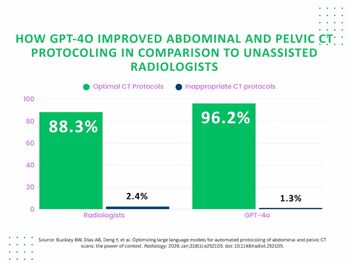
Engage Your Radiology IT Vendors about Meaningful Use
Radiologists and imaging groups should discuss with their IT vendors the plans and strategies for certifying their technology under the federal meaningful use program, said Keith Dreyer, DO, PhD, vice chair of radiology informatics at Massachusetts General Hospital, speaking Thursday at the American College of Radiology’s inaugural Imaging Informatics Summit in Washington, D.C.
Radiologists and imaging groups should discuss with their IT vendors the plans and strategies for certifying their technology under the
That’s according to
In an effort to qualify for the federal electronic health records program, and the up to $44,000 in incentive payments per eligible provider, radiologists need to understand the program’s measurements and criteria. That way, they can be educated enough to approach vendors about what they are doing to make sure their systems fit in the program.
“If [vendors] aren’t planning to certify, to me that is a bit of warning,” Dreyer said. “That’s something you really need to know.”
The IT systems, such as RIS, EHR or practice management systems, must meet 25 criteria, plus eight security criteria to qualify under the meaningful use programs. Systems are certified by designated bodies selected by the Office of the National Coordinator for IT.
A year or so ago, the focus by vendors was on certifying modular units, Dreyer said, which would allow radiologists to implement parts of a system to meet the criteria and quality for incentive payments. But now more vendors are opting to develop completely certified systems, he said.
Modified systems present a larger challenge for radiologists, because they’d then have to buy more technology to fill in the gaps or put together a fully complaint system, Dreyer said. Instead, “complete certification is the way to go.”
Previously, the imaging community was asking vendors to provide at least modular systems, but those alone “won’t solve your problems,” Dreyer said. The trend is moving toward complete systems, so it’s reasonable to ask for that from your vendors.
“Life gets 1,000 times easier if you hve a one product that’s completely certified,” he said, adding that’s probably a RIS. “Very soon, all stand-alone RIS will need complete certification.”
There are about a half dozen or so certified radiology products, a number that’s growing every week, Dreyer said.
As radiologists engage their vendors, the vendors in turn should be working to certify many of their radiology products, Dreyer said. Radiology vendors have traditionally been less prepared than companies that focus more on primary care practices seeking meaningful use of EHR. But, he added, “the vendors are responsible for providing products that are certified for meaningful use.”
Newsletter
Stay at the forefront of radiology with the Diagnostic Imaging newsletter, delivering the latest news, clinical insights, and imaging advancements for today’s radiologists.




























